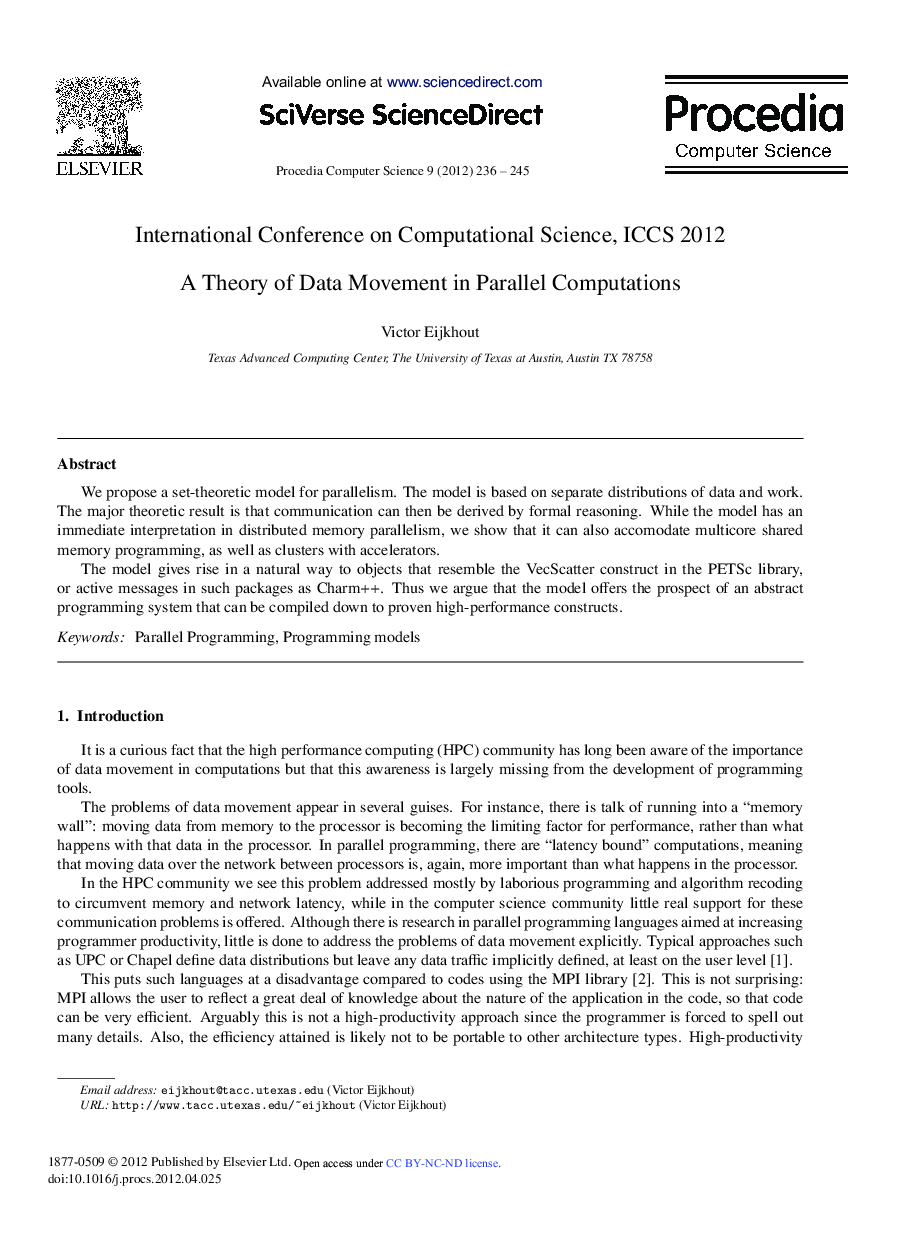| Article ID | Journal | Published Year | Pages | File Type |
|---|---|---|---|---|
| 486688 | Procedia Computer Science | 2012 | 10 Pages |
Abstract
We propose a set-theoretic model for parallelism. The model is based on separate distributions of data and work. The major theoretic result is that communication can then be derived by formal reasoning. While the model has an immediate interpretation in distributed memory parallelism, we show that it can also accomodate multicore shared memory programming, as well as clusters with accelerators. The model gives rise in a natural way to objects that resemble the VecScatter construct in the PETSc library, or active messages in such packages as Charm++. Thus we argue that the model offers the prospect of an abstract programming system that can be compiled down to proven high-performance constructs.
Related Topics
Physical Sciences and Engineering
Computer Science
Computer Science (General)
